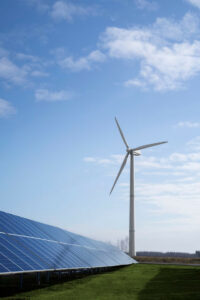The global energy paradigm is transforming profoundly due to the imperative to address climate change, the increasing adoption of electric vehicles, and rapid technological progress. This article explores cutting-edge advancements across diverse energy sources, from traditional coal to renewables like solar, wind, and nuclear power. It scrutinizes their environmental impact and delves into the prospects of establishing a sustainable energy grid.

Innovations in Energy Production: A Comprehensive Overview
Energy is an indispensable facet of our daily lives, fueling our homes, vehicles, and industries. With a burgeoning global population, the energy demand continues to escalate. Numerous technological breakthroughs have revolutionized how we harness and utilize energy. These innovations encompass significant reductions in solar energy costs, advancements in wind turbine technology, and the emergence of thorium-based nuclear reactors.
Advancements in Renewable Energy: Solar, Wind, and Hydropower
The progress in renewable energy sources is noteworthy. Solar energy is gaining popularity with decreasing costs and versatile applications, including electricity generation, water heating, and comprehensive home energy supply. Wind energy has also experienced significant developments, with giant, more efficient turbines generating higher energy outputs while minimizing noise and vibration levels.
Hydropower is another renewable source gaining traction. As hydropower plants become more efficient in harnessing the kinetic energy of water, their global adoption and cost-effectiveness continue to rise.
Progress in Non-Renewable Energy: Coal, Nuclear, and Thorium
Non-renewable energy sources are also undergoing technological advancements. Coal remains a widely used energy source, but carbon capture and storage innovations have mitigated its environmental impact. Furthermore, the nuclear energy sector has seen substantial progress with introducing thorium-based reactors, offering increased efficiency, reduced waste production, and improved safety compared to traditional reactors.
Environmental and Economic Implications of Energy Development
The strides in global energy have far-reaching environmental consequences. While renewable energy sources have a minimal ecological impact, non-renewable sources can contribute to climate change if not used responsibly. Consequently, balancing ecological concerns and economic implications is essential, as renewable energy sources can create jobs and reduce energy expenses.
Envisioning a Sustainable Energy Grid
Building a sustainable energy grid involves assessing available energy sources, optimizing energy infrastructure efficiency, and promoting investments in renewable energy. This encompasses energy storage technologies like batteries and fuel cells to maximize grid flexibility and facilitate the integration of renewable energy sources.
Transitioning from Fossil Fuels: Strategies and Challenges
The shift away from fossil fuels requires a multifaceted approach, including investments in renewable energy sources, policy formulation to incentivize their adoption, and the development of energy storage technologies. Reducing energy demand and implementing energy efficiency measures are crucial to minimizing waste.
Investment and Financing Opportunities in Global Energy
The ongoing energy transformation presents various investment and financing opportunities, including renewable energy projects, energy efficiency technologies, and energy storage solutions. Moreover, investments in technologies that convert renewable energy into other forms, such as electricity and heat, offer promising prospects for reducing waste and maximizing renewable energy utilization.
The global energy landscape has changed significantly, transitioning from fossil fuels to renewable sources and witnessing advancements in non-renewable energy production. These developments offer the potential to create a sustainable, renewable energy-powered grid. Investing in renewable energy, implementing supportive policies, developing energy storage technologies, and promoting energy efficiency and waste reduction measures are crucial to shaping a cleaner and more sustainable energy future.